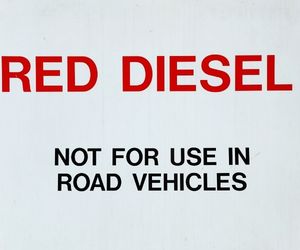 If you are new to the fueling industry, you may have questions about the different types of fuel and oil used in a variety of products and vehicles. As the old cliche goes, “not all [oil] is created equal”. It may not be overly important to be knowledgeable about these differences for the average person, but having just a little bit of education can help you appreciate how homes are heated or how farmers are able to use their machinery in an efficient and cost-effective manner. Clear diesel, dyed diesel, and heating oil are often confused, as they do share similar properties as petroleum products called distillates.
If you are new to the fueling industry, you may have questions about the different types of fuel and oil used in a variety of products and vehicles. As the old cliche goes, “not all [oil] is created equal”. It may not be overly important to be knowledgeable about these differences for the average person, but having just a little bit of education can help you appreciate how homes are heated or how farmers are able to use their machinery in an efficient and cost-effective manner. Clear diesel, dyed diesel, and heating oil are often confused, as they do share similar properties as petroleum products called distillates.
The Difference is Clear
First, it’s important to understand the differences between clear diesel and dyed diesel. Dyed diesel, also called off-road diesel, is used primarily in off-road vehicles that are not intended for highway or road use. Used typically in tractors, heavy equipment, or other off-road vehicles in farming or ag spaces, the red marker in this diesel makes it exempt from most road taxes.
Clear diesel, on the other hand, is subject to state and federal excise taxes. Depending on the state, road taxes could be anywhere from .40 cents/gallon up to 1.00/gallon. These taxes help pay for things like transportation infrastructure projects including routine maintenance of roads, highways, bridges, tunnels, and more.
It is illegal to use dyed diesel in vehicles on the road, such as semi-trucks, personal vehicles, etc. If caught, it is seen as road tax evasion and can be subject to fines between $1,000 and $2,000 per tank per vehicle. The exception, in some cases, is during a state of emergency. For example, during Hurricane Ida, the Hart team was able to use dyed diesel in on-road vehicles to help in the rescue operation in Louisianna.
The 4-1-1 on Dyed Diesel
While both dyed diesel and heating oil are dyed red, the two have distinct sulfur content differences that make them difficult to use interchangeably. Dyed diesel and clear diesel contain less than 15ppm of sulfur, making them much lighter substances than heating oil. Dyed diesel is often used in generators as well as off-road vehicles. *Note that red or clear diesel can be a substitute for heating oil, but heating oil cannot substitute red or clear diesel because of its high sulfur content, which harms equipment, vehicles, and the environment.
What is Heating Oil?
Heating oil is the most different from the other two types of oil we are discussing. Heating oil is, quite literally, oil that heats. Its sulfur content is greater than 500ppm, which makes it a very heavy oil. More specifically, it is the most common type of oil used in homes – either in furnaces, boilers, or water heaters. Heating oil can also be used in generators, although it is not recommended if there is clear or dyed diesel available. Heating oil is one of the most efficient and cost-effective fueling/heating sources. Produced mainly out of crude oil, heating oil is dyed red (like dyed diesel), but cannot be used in off-road capacities like its counterpart. With the heavy sulfur content, the contaminants in heating oil can harm the vehicle or equipment.
Check out the Hart FAQ
If you have questions about clear or red-dyed diesel or other fueling options, please visit our Red Dyed Diesel FAQ page for more information. You can also contact the Hart team at any time for questions regarding diesel delivery and fueling resources.